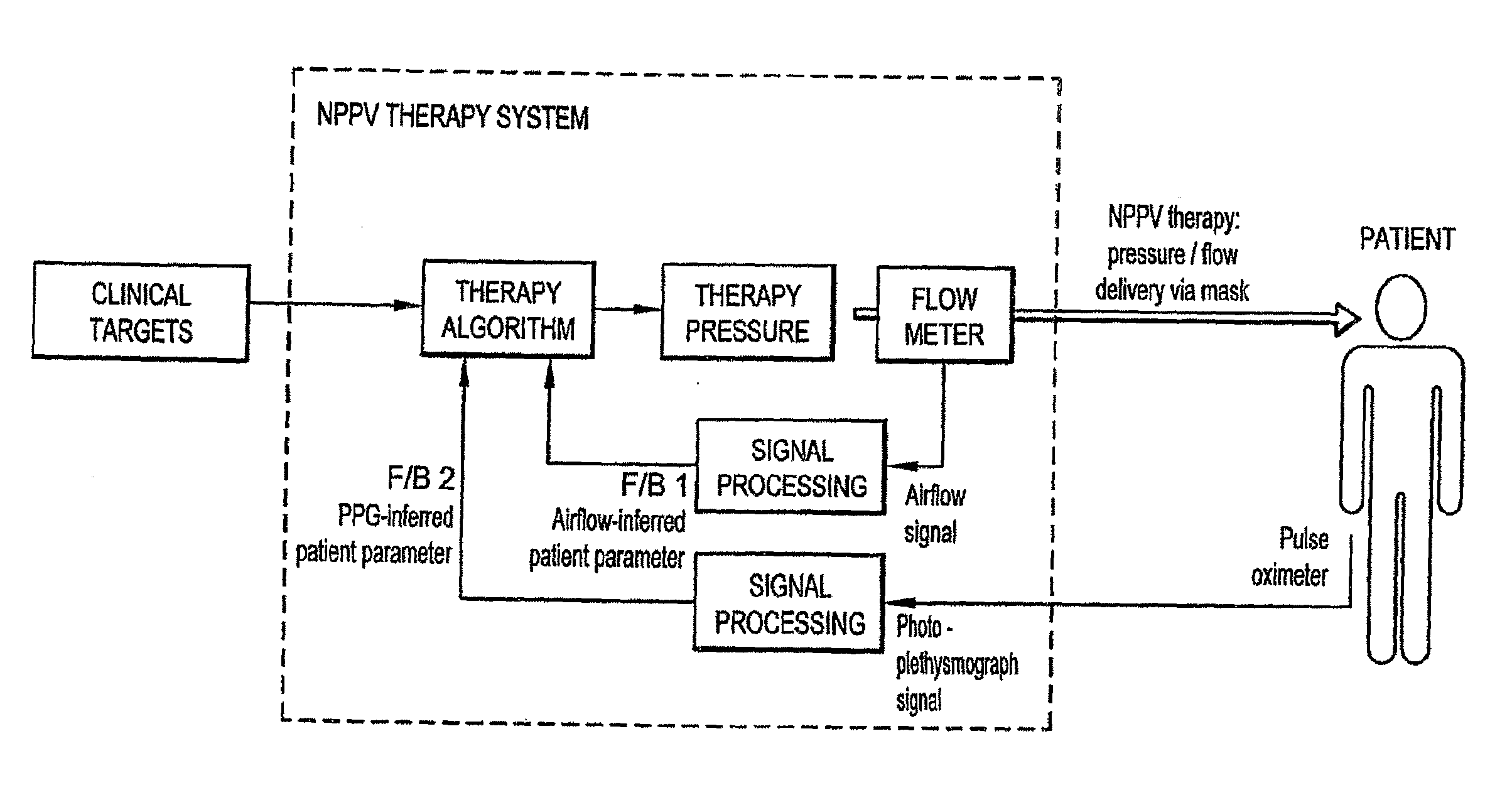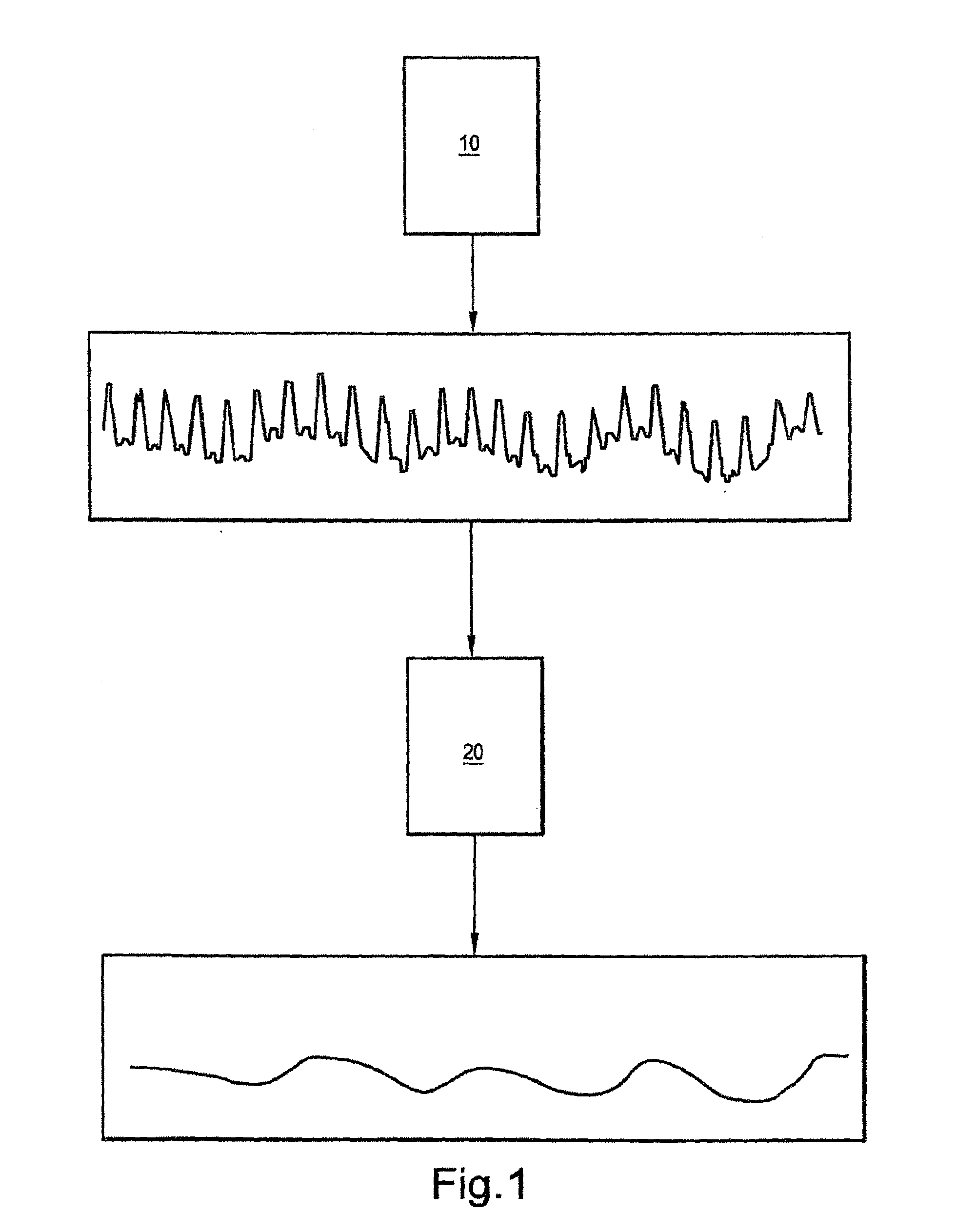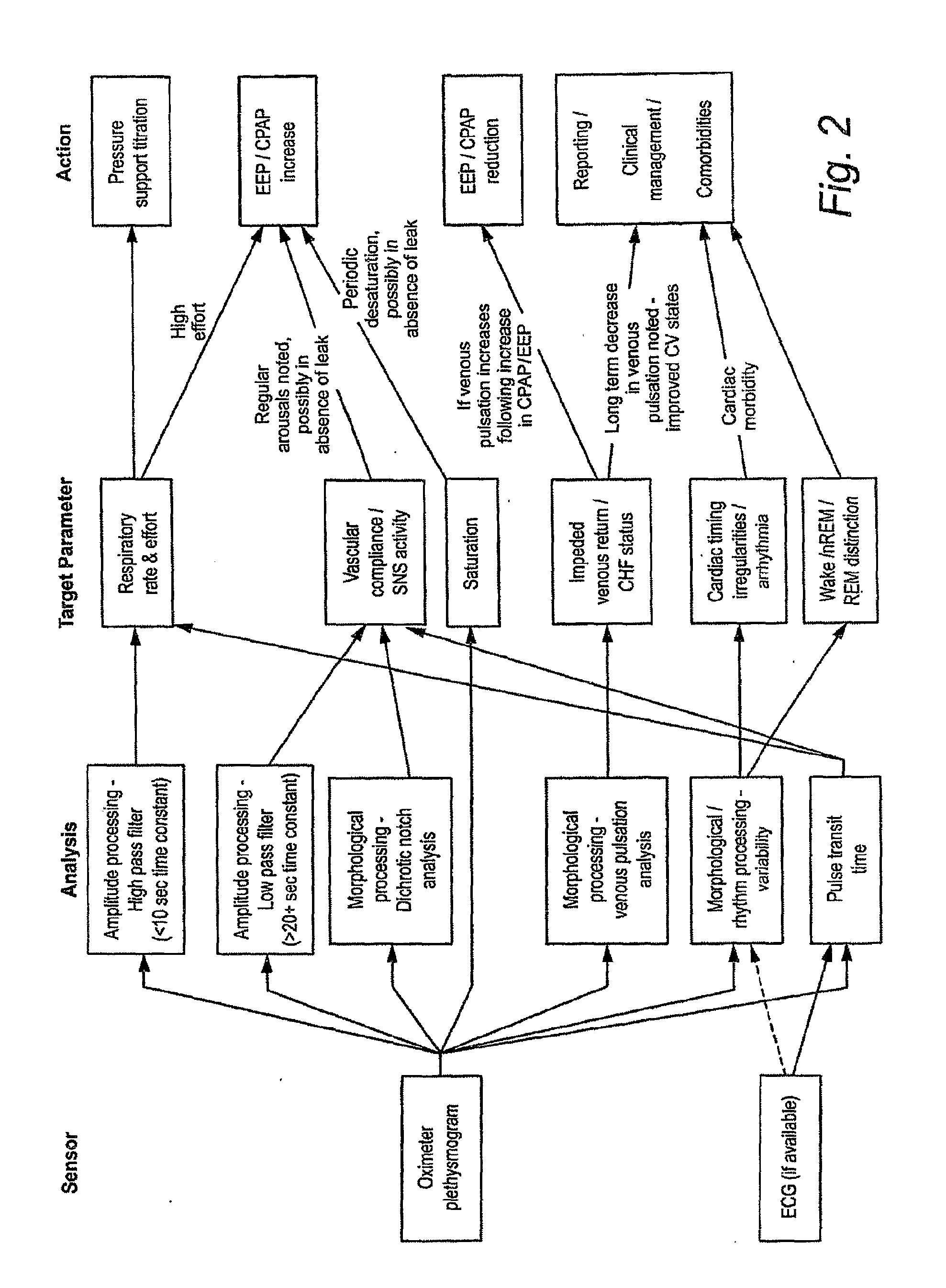Systems, Methods, and/or Apparatuses for Non-Invasive Monitoring of Respiratory Parameters in Sleep Disordered Breathing
a technology for respiratory parameters and monitoring devices, applied in the field of monitoring parameters relevant to sleep disordered breathing, can solve the problems of inability to determine if csa and osa have occurred concurrently, unable to give any information, and unable to discriminate between obstructive sleep apnea and other problems, to achieve the effect of reducing side effects, improving synchrony, and reducing pressure support/volume autotitration
- Summary
- Abstract
- Description
- Claims
- Application Information
AI Technical Summary
Benefits of technology
Problems solved by technology
Method used
Image
Examples
Embodiment Construction
[0052]Pulse oximeter plethysmography (sometimes referred to simply as “pulse oximetry” or “photo-plethysmogram”) is a standard method of obtaining blood oxygenation data in a non-invasive and continuous manner. Oximeters use two wavelengths of light to solve for hemoglobin saturation. The waveforms are created by the absorption produced by pulsatile arterial blood volume, which represents the alternating current (AC) signal. The absorption produced by nonpulsatile blood, venous and capillary blood, and tissue absorption is depicted by the direct current (DC) signal. See Hartert et al., Use of Pulse Oximetry to Recognize Severity of Airflow Obstruction in Obstructive Airway Disease, Correlation with Pulsus Paradoxus, Chest 1999:115:475-481. A pulse oximeter signal from Hartert et al. is shown in FIG. 1.
[0053]Currently, pulse oximeters are primarily employed for monitoring SpO2 and heart-rate; however, in accordance with an embodiment of the invention, the pulse oximeter is used as an...
PUM
 Login to View More
Login to View More Abstract
Description
Claims
Application Information
 Login to View More
Login to View More - R&D
- Intellectual Property
- Life Sciences
- Materials
- Tech Scout
- Unparalleled Data Quality
- Higher Quality Content
- 60% Fewer Hallucinations
Browse by: Latest US Patents, China's latest patents, Technical Efficacy Thesaurus, Application Domain, Technology Topic, Popular Technical Reports.
© 2025 PatSnap. All rights reserved.Legal|Privacy policy|Modern Slavery Act Transparency Statement|Sitemap|About US| Contact US: help@patsnap.com



